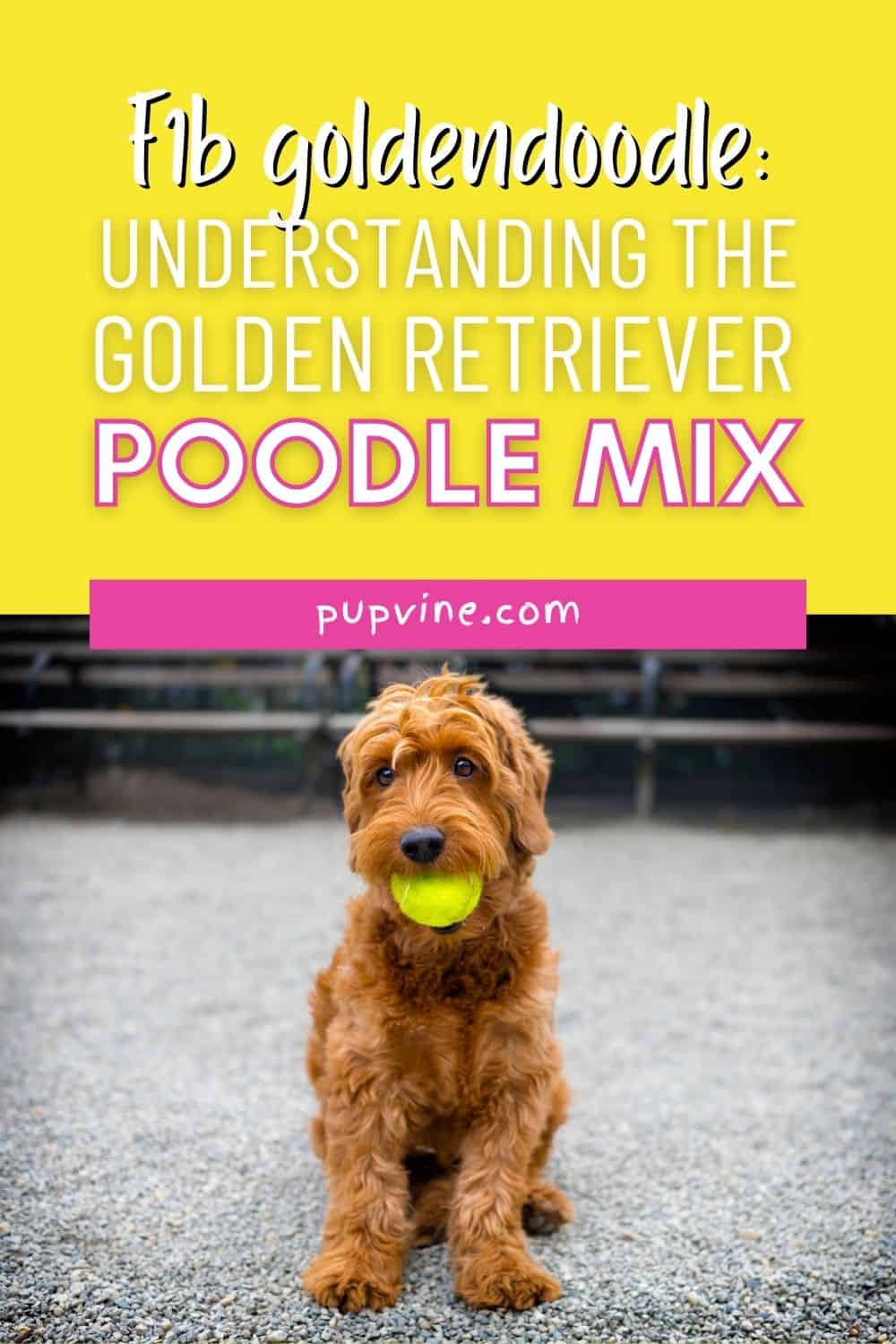Who doesn’t love Goldendoodles?! These cute little teddy bears have won the hearts of everyone! They are good-looking, they are hypoallergenic, and they are unique – what’s not to like?
However, this doesn’t mean that everyone is familiar with the amazingly fluffy world of Goldendoodles. Many things about these crossbreeds are still mysteries to people who are not deeply invested in this designer dog.
For example – F1B Goldendoodles. What are they and why are they so special? And what do these labels even mean?
Not all Goldendoodles are the same. This doesn’t depend just on who the dog’s parents are. A crossbreed generation is also an important factor.
But what do generations matter? And how can you recognize an F1B Goldendoodle?
Buckle up – I’ll tell you everything you need to know about these adorable little doggies!
What Does F1B Goldendoodle Mean?
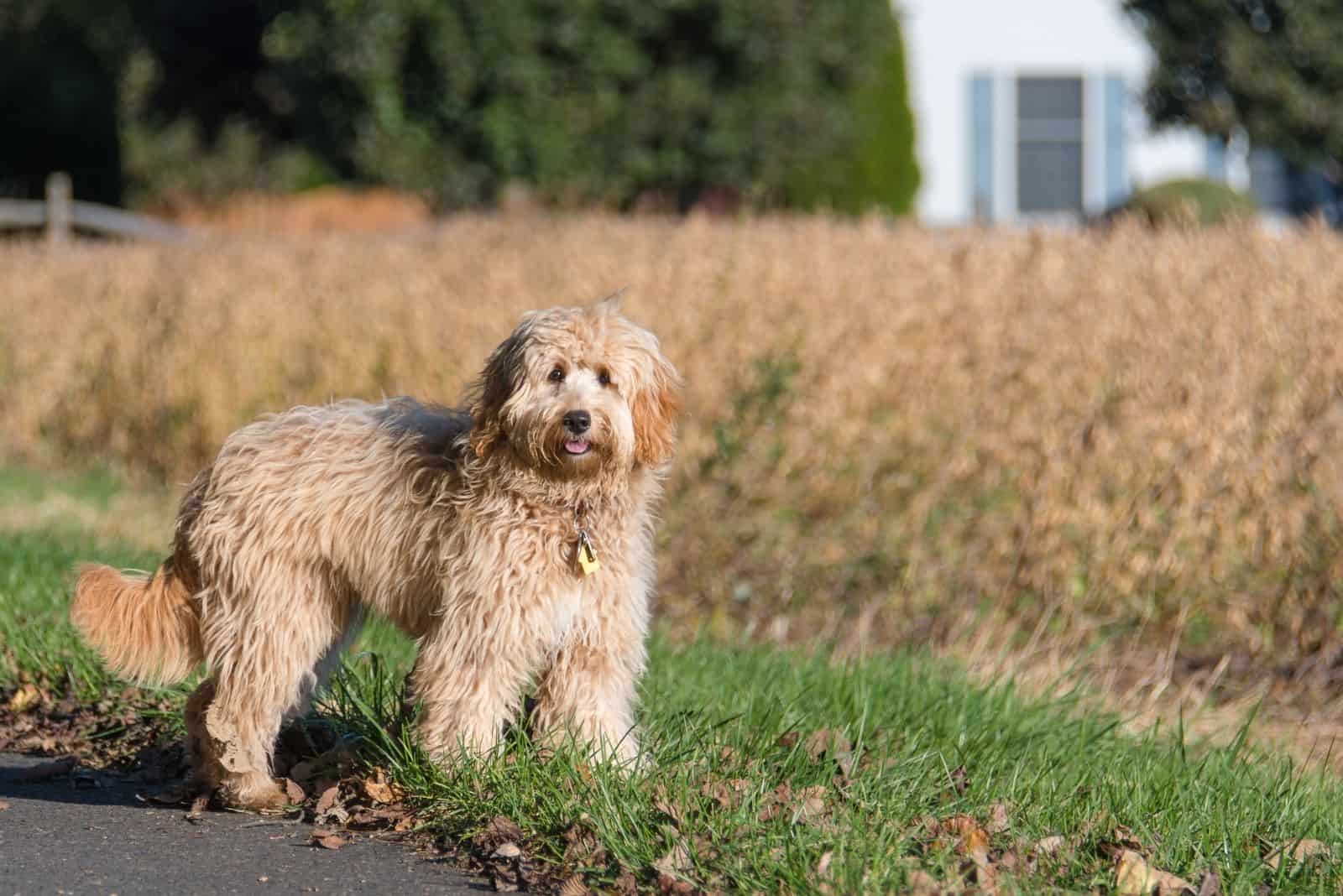
If you were ever looking at Goldendoodle puppies for sale or even just researching the breed a bit, you might have noticed those weird-looking labels before the breed’s name.
For example, a breeder might state that they are selling F1 Goldendoodles and F1B Goldendoodles. In general, this is the most common combination a reputable breeder will sell.
You might think this is some weird code, but the truth is, this only indicates the dog’s generation.
Here’s what I mean:
• P indicates that a dog has been purebred. This letter is almost never used, as determining generations in purebred dogs isn’t important.
• F is a sign that a dog is a crossbreed. It originates from the word filial which is a term used to describe the cross’ offspring.
• Numbers indicate the number of generations. First-generation is the first mixed breed puppy that was produced from two purebred parents.
• Letter B means that the dog is a backcross. This means that a mixed breed dog was bred with one of his purebred ancestor’s breeds, returning the genes of said purebred to the bloodline.
As such, F1 Goldendoodle is a first-generation Goldendoodle, F1B Goldendoodle is the first-generation backcross, F2 is a second-generation Goldendoodle, and so on.
Goldendoodle Generations Explained

Understanding Goldendoodle generations can be essential when you need to pick the right dog for yourself. This is because different generations can mean that the dog is more or less like one of his parent breeds.
To help you know what I mean, I will explain the most important Goldendoodle generations out there. Then, I will let you know why F1B Goldendoodles are my absolute favorite.
F1 Goldendoodles
F1 Goldendoodles are the first generation of Goldendoodles. These pups are 50% purebred Golden Retrievers and 50% purebred Poodles.
To get an F1 Goldendoodle, you need to mate a Golden Retriever with a Poodle. A Poodle’s size can influence the size of a litter.
For example, if you choose a miniature Poodle or a toy Poodle, you might get a medium or mini Goldendoodle, while a standard Poodle will ensure you have a standard-size Goldendoodle, as well.
However, no matter the hybrid dog in question, first generations are considered very unstable. This is because the parents’ genes are very different, and you cannot be certain what genes the puppies will pick up.
As Goldendoodles have been around for a very long time, predicting their appearance and coat type might be a bit easier than in some other crossbreeds, such as Pomskies or even Bernedoodles.
Still, it’s impossible to know for certain which of the parents’ features F1 generations will have.
F1 Doodle generations can be hypoallergenic, but they don’t have to. This is all up to the dog’s genetics.
For example, if a dog inherits Poodle genes for the coat type, he will shed significantly less compared to Golden Retrievers.
However, if he has a straight double coat of Goldies, he’s going to be a shedder – although likely not an as big one as purebred Goldies are.
Most of the time, however, F1 Goldendoodles will be somewhere in the middle, with a wavy coat that sheds a little.
Also, F1 Goldendoodles will be rather healthy, as their hybrid vigor will be strong, keeping them from inheriting many health issues their parent dog breeds struggle with.
F1B Goldendoodles
F1B Goldendoodle is the first-generation backcross. They can be backcrossed with either parent breed, but most Poodle mixes are bred with Poodles. This is why whenever I mention F1B Goldendoodles, I will think of Poodle backcrosses.
This is because Poodle genes are considered more desirable due to the dog’s curly coat with hypoallergenic properties.
As such, F1B Goldendoodles are 75% Poodles and 25% Golden Retrievers.
When you add some more Poodle genes to the dog’s gene pool, you can increase the amount of Poodle traits a dog will have.
By doing this, you have a larger chance of creating a non-shedding dog that will have all the traits you want, while still keeping some of his Golden Retriever parent’s features, such as a yellow or apricot coat color.
F1B Goldendoodles won’t have as strong of hybrid vigor as F1 Goldendoodles, but they’ll be right behind them. This means they are a very healthy generation.
F1BB Goldendoodles
F1BB Goldendoodles are the result of breeding an F1B Goldendoodle with a purebred Poodle. This will further increase the number of Poodle’s genes, resulting in dogs that are 87.5% Poodles and 12.5% Golden Retrievers.
An F1BB Goldendoodle is very likely to look like a purebred Poodle due to the large number of Poodle genes these dogs have. While this means they are most likely non-shedding dogs, their overall resemblance to the purebred Poodles can make them undesirable.
Most F1BB Goldendoodles will have a wavy or curly coat. Straight coats are not likely to happen, as these pups have a very low percentage of Golden Retriever genes.
However, if you’re looking for a hypoallergenic dog, this might be the best Doodle generation to buy, as they are very likely to be allergy-friendly.
F2 Goldendoodles
F2 Goldendoodles are the offspring of two F1 Goldendoodles. Just like the first generation, F2 Goldendoodles are 50% purebred Poodle and 50% purebred Goldie.
This isn’t a desirable generation in not just Doodles but in any mixed breed dog. This is because the traits of this generation are even more challenging to predict than in the first generation.
You have no way of truly knowing what hidden genes an F1 Goldendoodle might carry. These genes can often skip a generation, expressing themselves in the offspring.
For example, even if both F1 Goldendoodle parents have an apricot coat, their F2 puppy might end up having a chocolate coat of his Poodle ancestor.
Most of the F2 Goldendoodles are low-shedding, but this isn’t a well-enough guarantee for allergy sufferers.
A breeder will have no way of certainly knowing what features the puppy will inherit. For example, both parents might be non-shedding, but they can still produce a low-shedding dog.
This is why most dog owners won’t decide on the F2 Goldendoodle generation, and the breeders know it, which is why they are rarely producing them.
Also, these dogs won’t have very strong hybrid vigor, but they will still be significantly healthier than their parents.
F2B Goldendoodles
F2B Goldendoodle is the result of the breeder crossbreeding an F1 Goldendoodle with an F1B generation or an F2 Goldendoodle with a purebred Poodle. Either way, this will result in a dog that is 62.5% Poodle and 37.5% Goldie.
These generations will help create dogs that have a more hypoallergenic coat, but don’t look as much like their Poodle parent as do F1B or F1BB Goldendoodles.
Also, they’ll have more health benefits from hybrid vigor than most other crossbred dogs.
Just keep in mind that this generation can be challenging to predict, as well. This is the main reason why not many dog owners are looking for it, and why do many of these puppies end up in kennels.
F2BB Goldendoodles
F2BB Goldendoodles are a backcross of a backcross. They are the result of crossbreeding an F2 Goldendoodle with a purebred Poodle – twice.
F2BB Goldendoodles are 81.25% Poodle and 18.75% Golden Retrievers.
Due to their high number of Poodle genes, they are excellent dogs for owners with severe allergies. At the same time, they don’t have as many Poodle genes as do F1BB Goldendoodles, meaning that these pups might still pick up some Golden Retriever’s genes.
Keep in mind that this generation’s coat is prone to matting and you need to brush it daily using a good dog brush for these pooches.
However, F1BB generations don’t have as much hybrid vigor left. They are more prone to health problems and various conditions, which is why many breeders will refuse to have them.
Multigeneration Goldendoodles
Multigeneration Goldendoodles are all Doodles that are third-generation or older.
This can include F3 Goldendoodles, which are 50 – 50, but it can also include F1BB and even F2B, as there isn’t a regulation about the percentage of bloodlines these pups might have.
As such, there is a huge variety in how these pups might look and whether they’ll be a good choice for people with severe or at least mild allergies.
In general, all multigen Goldendoodles will have less hybrid vigor than younger generations, from half-Poodles to backcrosses.
Goldendoodle breeders will rarely sell multigeneration Goldendoodles as producing these puppies can last for a very long time. This is one of the reasons why these puppies can be so expensive.
What Makes F1B Goldendoodles Stand Out?
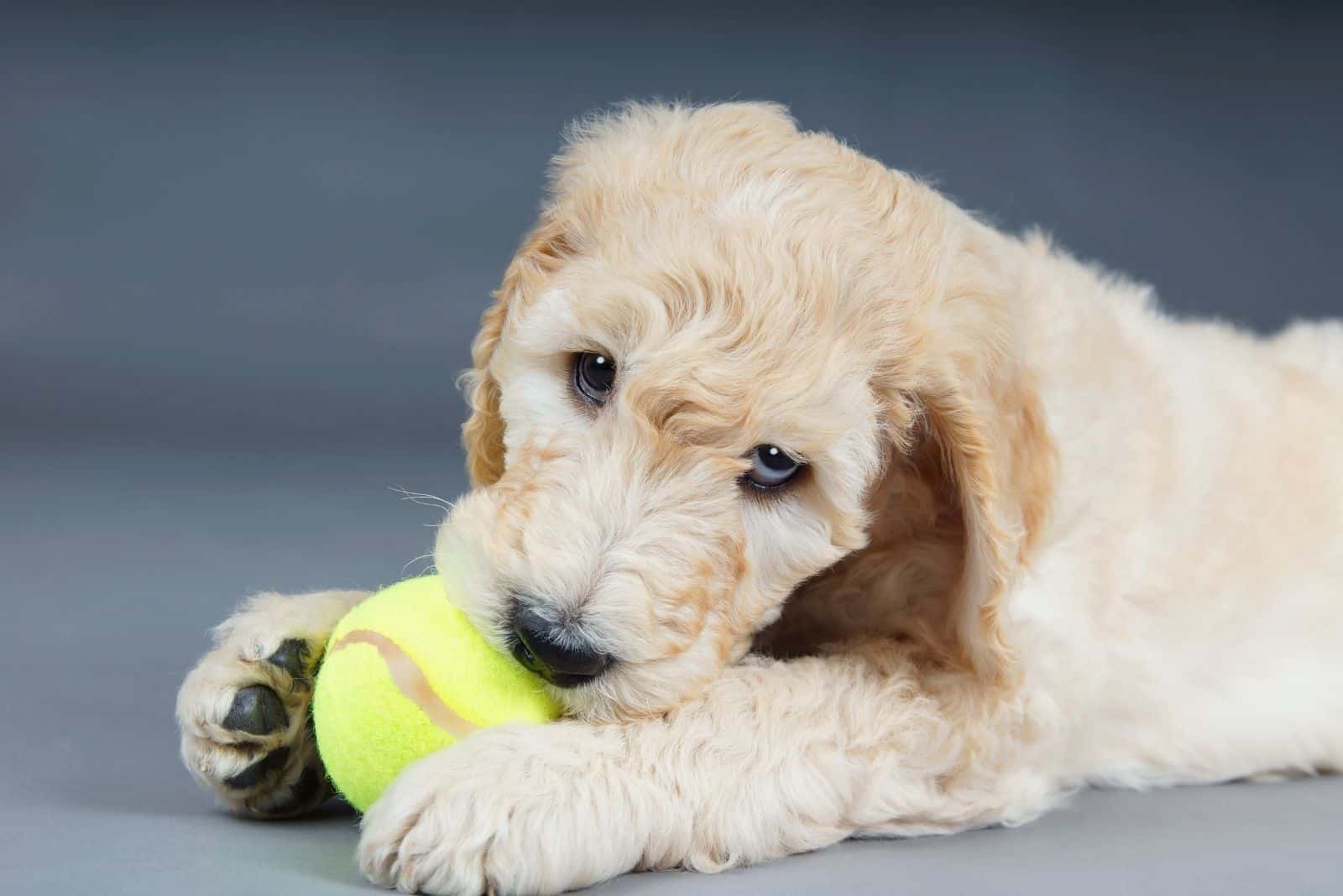
F1B Goldendoodles, together with the F1 generation, is the most common Doodle generation being sold. While it might sound weird or unusual, many breeders consider this to be the best Goldendoodle generation out there.
Here are a few reasons why:
They Rarely Shed
Due to a large amount of Poodle genes, F1B Goldendoodles have a very high chance of inheriting Poodle’s curly, non-shedding coat.
If you’re someone who doesn’t feel like picking up dog hair every day, then F1B Goldendoodle might be the right dog breed – or, rather, a crossbreed – for you.
Of course, all animals with hair will shed. The thing with dogs with curly hair is that this hair doesn’t fly away or fall to the floor. Instead, it will stay stuck inside the curls until you brush it off.
Just keep in mind that this coat type is very prone to mats and shedding. While daily brushing for hair fall out isn’t necessary, you should still brush your dog as often as possible – preferably, every two days.
You must also make sure to have a proper dog brush for Goldendoodles that can reach the depth of the dog’s coat, one that will remove mats and detangle everything the right way.
They Are Hypoallergenic
I have to give you the harsh truth: There is no such thing as a truly hypoallergenic dog.
The term hypoallergenic indicates that something – whether that be an object, food, or a pet – doesn’t have any allergens. In dogs, however, this isn’t possible.
What’s causing allergy problems isn’t dog hair, as many people think, but rather a specific protein found in the dog’s urine, saliva, and dander.
All dogs secrete urine and saliva, and as dander is made out of dead skin flakes all dogs will also have dander.
Dander is the biggest issue in people with dog allergies. It will get stuck onto the dog’s hair and then fly everywhere. This is why you might think it’s your dog’s hair that’s causing you issues instead of something else.
When a dog is non-shedding, the dander stays on its skin instead of spreading onto your clothes, furniture, and floor. This is why such dogs might not give you problems.
Golden Retrievers are far from hypoallergenic dogs. These dogs are heavy shedders, and they can also drool.
However, Poodles are as hypoallergenic as a dog can get. These are clean dogs that don’t drool, and their coat doesn’t shed.
As F1B Goldendoodles have lots of Poodle genes, they are fairly allergy-friendly. In fact, many F1B Goldendoodles can be considered hypoallergenic dogs.
This is because their coat is more likely to look like the Poodle’s coat instead of the Golden Retriever’s. F1B Goldendoodles will inherit most of the Poodle’s hypoallergenic properties, making them a very popular generation among allergy sufferers.
They Don’t Have Too Much Poodle Genes
Sure, F1B Goldendoodles are more Poodles than Goldens. However, they are not too much Poodles or too little Golden Retrievers, at least not when compared to some other generations that are even more hypoallergenic or less shedding.
This means that there are still plenty of Golden Retriever genes that can express themselves.
F1BB or F2BB dogs have so many Poodle genes in them that they might not look like Goldendoodles at all! This immediately lowers their desirability, as most people want Goldendoodles for their cute looks, something many F1BB and F2BB dogs might lack.
At the same time, they have more Poodles than first or second generations, meaning they still have more characteristics people love this breed for.
They Come In Many Sizes
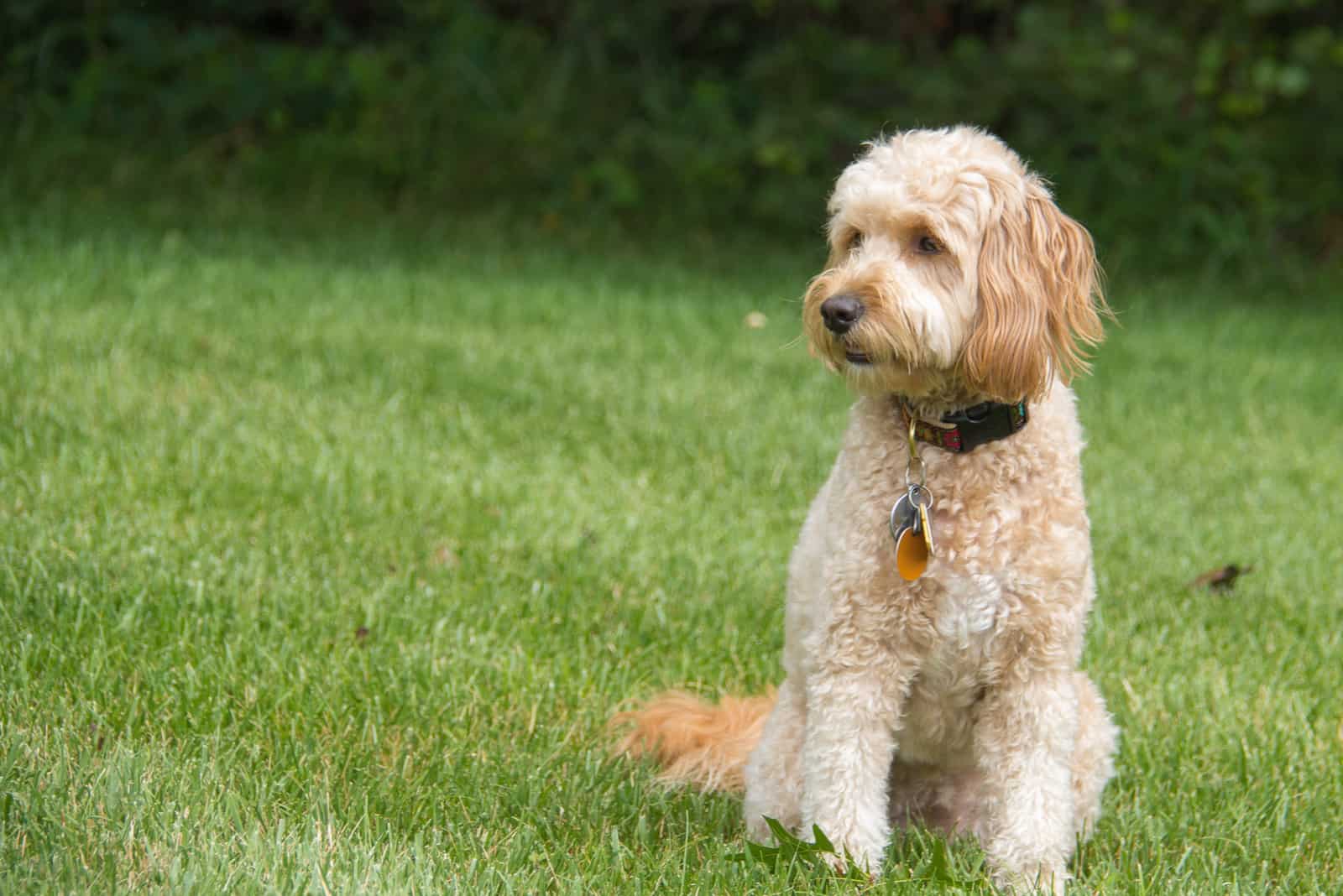
The appearance of an F1B Goldendoodle is easier to predict than an F1 or F2 Goldendoodle. By adding Poodle genes, you can control the dog’s appearance to an extent.
For example, if you’d like to have a smaller Goldendoodle, you should just add a mini Poodle to the mix.
On the other hand, if your Goldendoodle is already too small, just breed it with a standard Poodle and the future generations are likely to be larger.
While there is still that surprise factor that comes with all crossbreeds, a reputable Goldendoodle breeder should be able to, rather precisely, calculate at least the size of your future F1B Goldendoodle.
This is why most mini Goldendoodle breeders are, in fact, F1B Goldendoodle breeders. This is because this generation gives them the greatest chance of experimenting with predictable results.
They Look Like Teddy Bears
The F1B Goldendoodles are most likely to have that teddy bear appearance this breed is known for. They have just the right amount of both dog breeds in them, while also being rather easy to breed.
F1 Goldendoodles, for example, might end up looking like teddy bears, but there is no way of truly knowing whether this will happen or not.
Also, they have a rather lot of Golden Retriever in their bloodline. While a Goldie is an adorably-looking dog, he isn’t the most teddy bear-like.
By adding a bit of Poodle genes to the mix, but not going overboard, you can increase the chances of your future puppy looking like a living dog without going overboard.
If your dog’s appearance is something that is really important to you, you should certainly look for an F1B Goldendoodle breeder who knows what he is doing. Such breeders will know which dogs to breed, resulting in the best puppies possible.
They Are Healthy
F1B Goldendoodles don’t have as much of a health vigor as F1 Goldendoodles, but they still have plenty of health benefits from mixing bloodlines.
This means they are fairly healthy dogs free of most health conditions. Because of this, they have a rather high life expectancy of 10 to 12 years.
However, they still might get any of the health conditions their parent dogs might be prone to. In the case of F1B Goldendoodles, this might include:
• Hip dysplasia.
• Cardiomyopathy.
• Eye problems.
• Subvalvular aortic stenosis.
• Addison’s diseases.
• Eye conditions, such as glaucoma, cataracts, and progressive retinal atrophy (PRA).
• Cancers.
Fortunately, most of these health conditions can be found in Golden Retrievers only, while Poodles are a much healthier breed.
As F1B Goldendoodles are just 25% Golden Retrievers, this alone lowers the chance of sick offspring. At the same time, it won’t increase the chances of health problems Poodles might have, as they don’t have too many Poodle genes.
Of course, the chance of health issues is always there, no matter how low it might seem to be. This is why it’s important to never skip vet visits and feed them the best dog food, even if you are entirely certain your mixed-breed dog is perfectly healthy.
F1B Goldendoodles For Sale
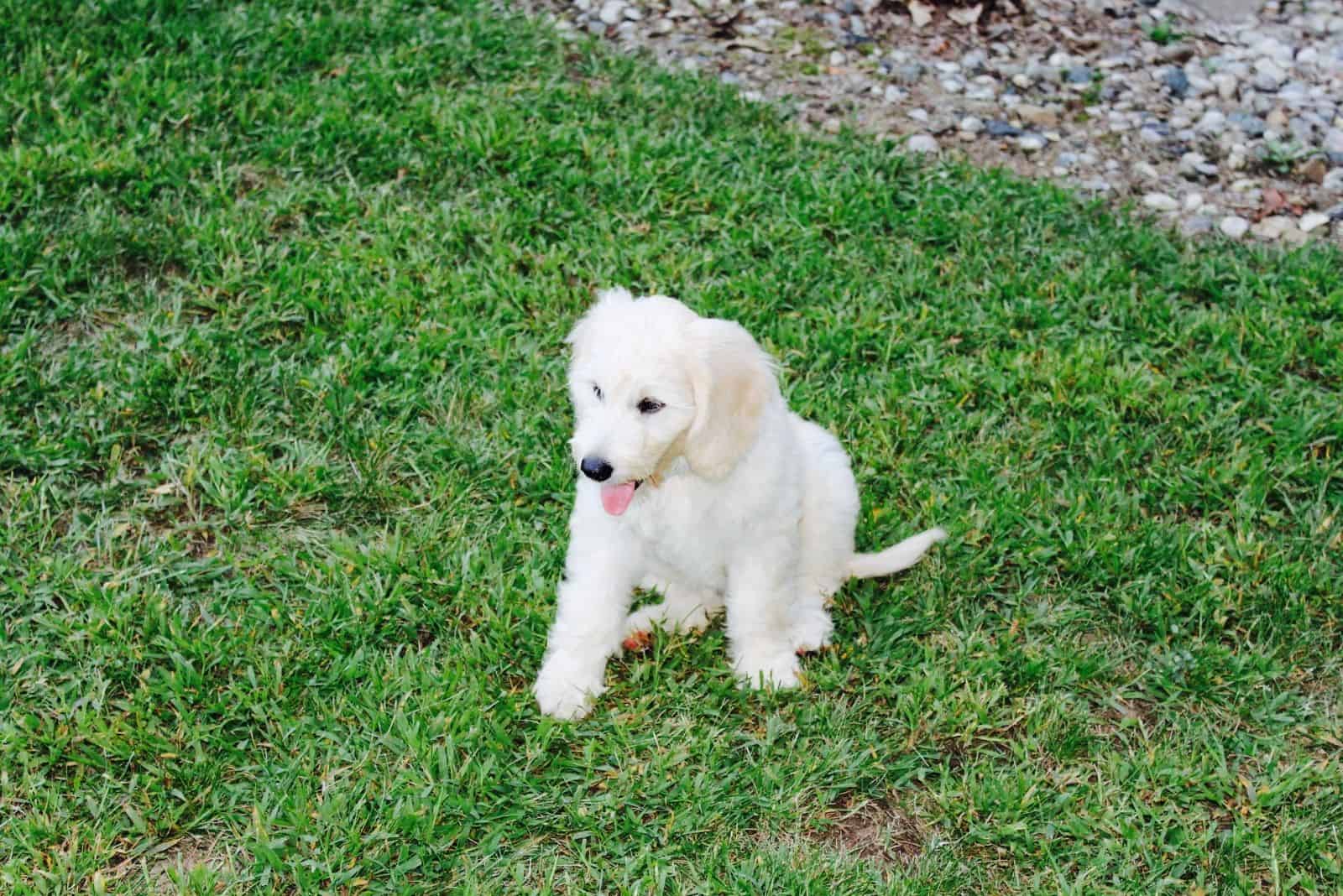
As I’ve briefly mentioned, most reputable breeders will sell F1B Goldendoodles. In fact, this will be the main generation they are breeding and selling.
This is because F1B Goldendoodles are the easiest to predict, and they keep the good looks that make them a perfect combination of a Golden Retriever and a Poodle.
However, to make sure you have the right generation, you should always buy from reputable breeders only.
Reputable breeders follow the breeding practices local kennel clubs have agreed upon.
While Goldendoodles are not recognized by major ones, such as the American Kennel Club (AKC) or the United Kennel Club (UKC), there is a Goldendoodle Association of North America (GANA) which has a fairly strict set of breeding rules that will help perfect the crossbreed.
In fact, many such associations are fighting to have AKC recognize Goldendoodles as a separate breed, and this is something that might happen in the future. Reputable breeders are helping this cause by adhering to the breed standard, creating puppies that are as uniform as possible.
Not just that, but these breeders will make sure all of their dogs and puppies are healthy, and they’ll make sure all go to loving homes.
Unfortunately, whenever a breed becomes popular, there will be many irresponsible breeders trying to earn some quick money. This is what is happening to Goldendoodles today.
Because of this you must be very careful. Never buy dogs that are being placed for sale on websites such as Craigslist. These are likely backyard breeders trying to earn some bucks on their dogs.
Also, avoid puppy mills and pet shops, as these locations don’t care about the quality of their dogs and only want to profit.
While it might not seem important to care about the purchase location, I can assure you this is one of the most important decisions you can make.
Are F1B Goldendoodles The Best Goldendoodles?
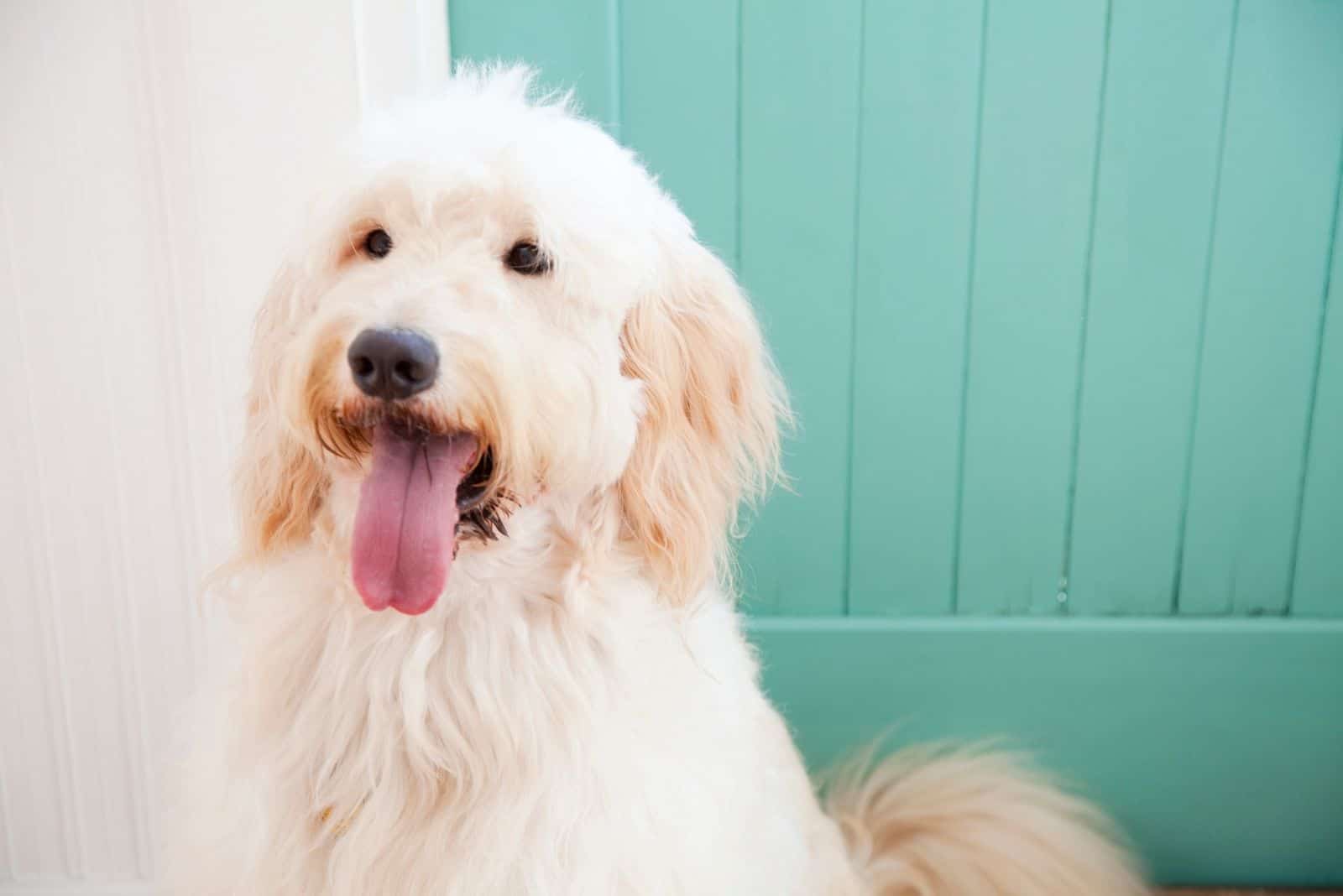
For many dog lovers out there, F1B Goldendoodles are the best Goldendoodle generation. This is because they are a perfect balance between the two breeds, creating dogs with desirable traits and having just the right amount of both sides.
These dogs are allergy-friendly, easy to predict, and they certainly are the best of both worlds.
Of course, it’s important to know that exceptions are always there. You can never be too certain with crossbreeds.
Even in a fairly uniform litter, you might still end up with a puppy that doesn’t look the way he or she should look like. Some genes will skip generations, expressing themselves when you least expect them.
Often, this will result in beautiful and unique dogs. However, if you’re someone struggling with allergies, this probably isn’t the risk you are willing to make.
This is why it’s important to always buy from reputable breeders who will know how to help you get the best dog possible – the one that will be a true representative of his breed and his generation.
In the end, it’s all up to you and your desires and requirements. Only you can form an opinion about what Goldendoodle generation is the best – and you won’t be wrong, as all of them are equally loveable.
F1, F2, or F1B Goldendoodles – they all make excellent family pets that will shower you with love and affection for as long as they live. They are obedient and cheerful and will try to make you smile in any way they can.
Their combination of amazing personality and adorable looks are what make them so sought-after and easy to recognize. Sometimes it seems like the popularity of Goldendoodle can match one of many purebred dogs.
Anyone who has ever owned a Goldendoodle will know why it is so.
Read Next: Goldendoodle Puppy Coat Transition And Grooming Guide
